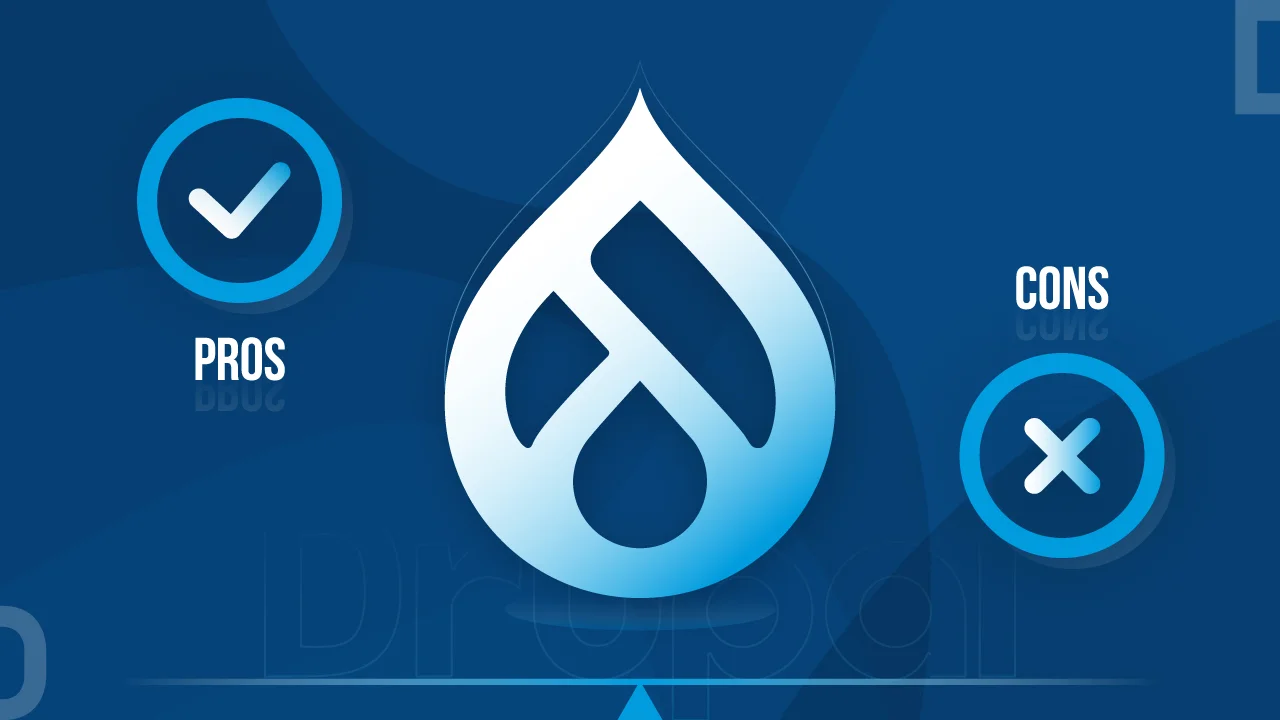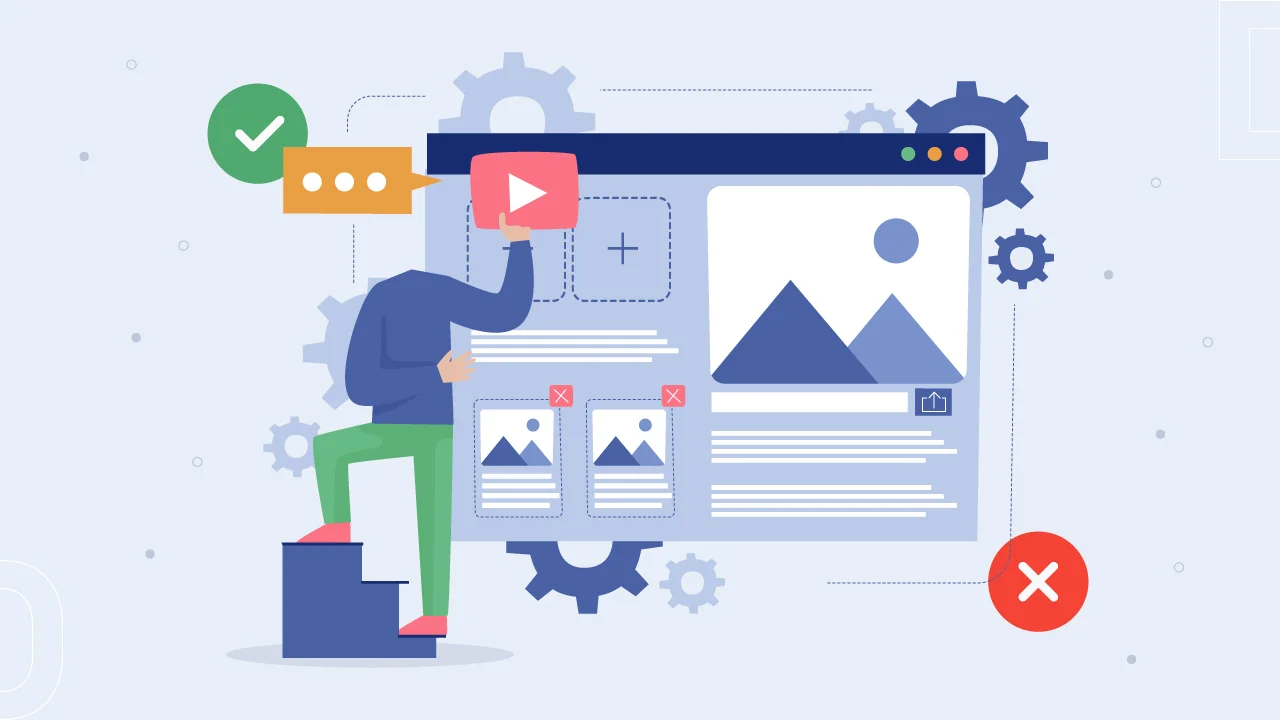Drupal is a widely used and popular content management system that is appreciated by a diverse range of organizations.
From large enterprises and government entities to non-profit organizations and educational institutions, Drupal has proven to be a valuable platform for various needs and requirements.
By learning about the advantages and potential drawbacks of Drupal, you can make an informed decision about whether it is the right CMS for your specific needs.
So in this article, you will find out what are the benefits and drawbacks of using Drupal. Decide when should you choose the other. Let’s dig in.
What are some of the commonly touted advantages of Drupal?
-
It is highly customizable for complex data architecture
Drupal’s flexibility makes it a great choice for all sorts of web projects. It can handle anything from small personal blogs to massive websites for big companies.
What makes Drupal most likable to developers? It’s easy to customize and build exactly what you need. It’s a versatile tool for creating unique online experiences.
One useful Drupal feature is content moderation. This makes it simple to get your whole team involved with adding and editing content on your website.
Drupal supports different publishing workflows, so you can find the perfect approach for your organization’s needs. That way, you don’t have to worry about content going live before it’s ready. Plus, Drupal lets you display the same content in multiple layouts and formats.
-
It is supported by a dedicated community
Drupal has a massive community behind it. This includes developers and fans who can help you out if you get stuck or have questions about building a Drupal website.
The Drupal community is all about freely sharing ideas and knowledge. There are guides, docs, and discussion boards where developers can get advice on tricky Drupal issues.
The community has been going strong since 2001 and just keeps growing. Whether you’re brand new or an experienced pro, Drupal.org is a must-visit resource for learning, news, support from contributors, and expert help.
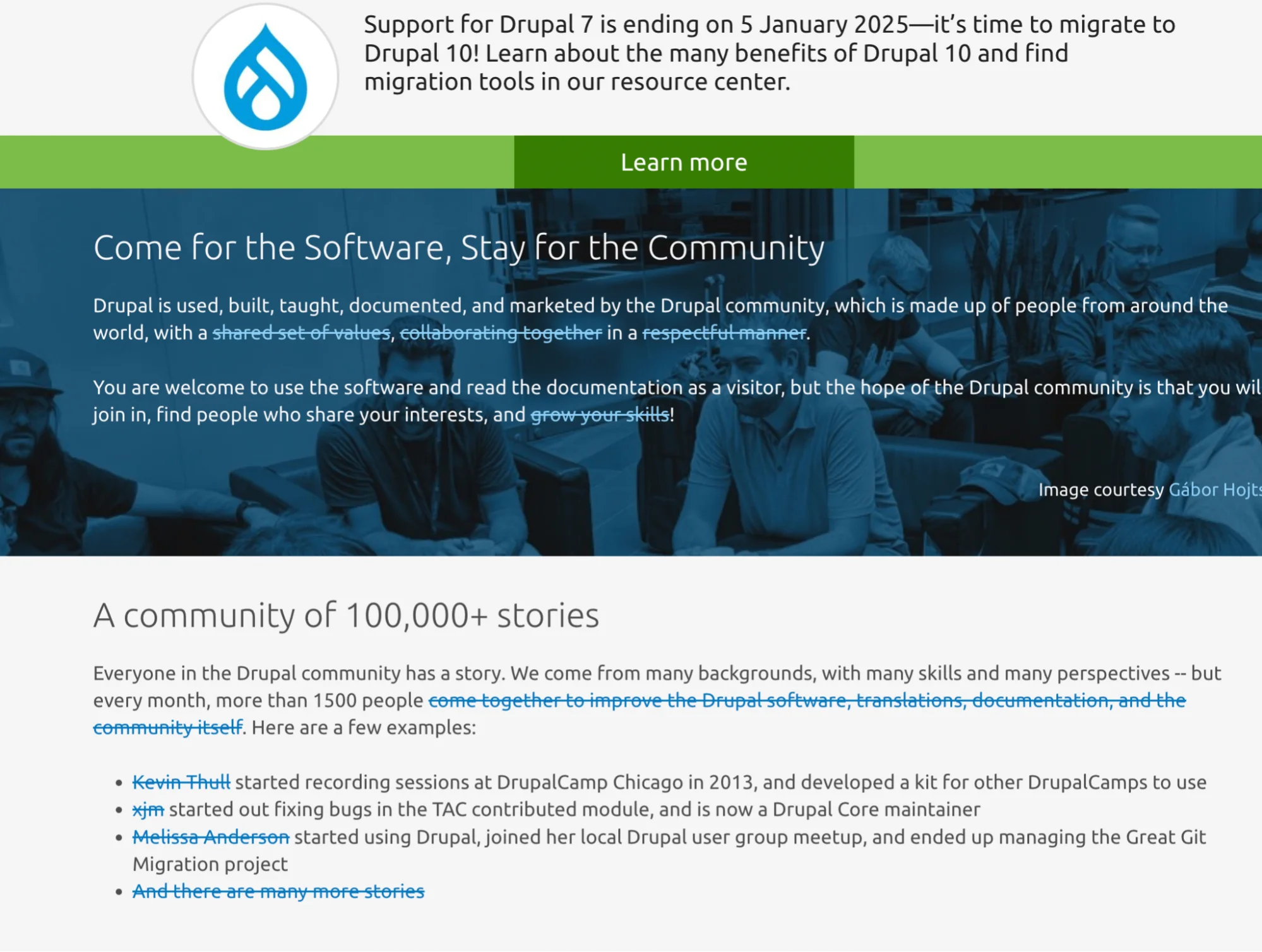 A big reason Drupal is so powerful isn’t just its features, but the huge active community surrounding it.
A big reason Drupal is so powerful isn’t just its features, but the huge active community surrounding it.Having tons of developers involved means there’s constant sharing of knowledge, support, and teamwork. Developers gain from the combined expertise, user-made add-ons, and collaborative space that drives Drupal to keep improving and innovating.
-
Drupal websites as less prone to hacking as compared to other platforms
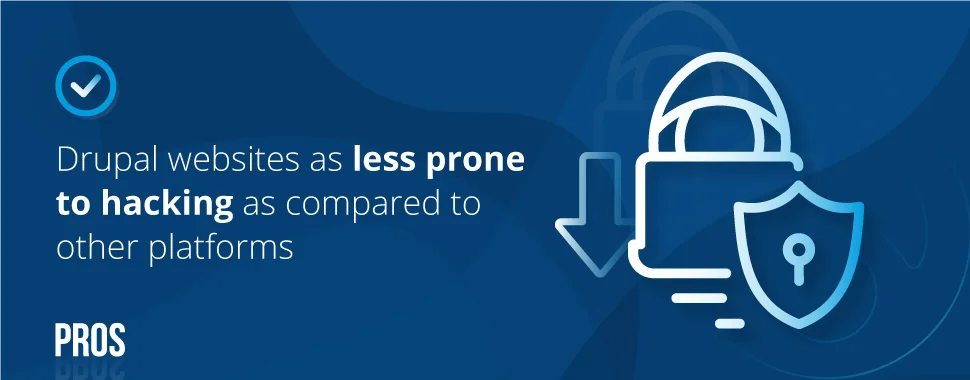 Security is one of Drupal’s biggest strengths, which is why it’s popular with governments and other organizations that really care about keeping their sites locked down. Compared to WordPress, only 2% of hacked websites looked at by Sucuri were built with Drupal, even though Drupal has around 4.7% market share.
Security is one of Drupal’s biggest strengths, which is why it’s popular with governments and other organizations that really care about keeping their sites locked down. Compared to WordPress, only 2% of hacked websites looked at by Sucuri were built with Drupal, even though Drupal has around 4.7% market share.Drupal takes security seriously and works hard to stop threats before they happen. Regular updates and a dedicated security team mean vulnerabilities get fixed fast.
This gives users confidence that their Drupal sites are well-protected from attacks and other issues. Keeping data and privacy secure is a top priority.
Unlike some other content management systems, Drupal is open-source with a massive community constantly reviewing the code. That makes it easy to find and quickly patch any security holes that pop up. Updates come out frequently with the latest security fixes and new features.
With so many people testing and using Drupal, the software just keeps getting more stable and secure for everyone.
There are even third-party add-ons to boost security like CAPTCHAs to block bots and spam, “honeypots” to catch hackers, auto-logouts, and requirements for strong, regularly updated passwords. Modules give you lots of flexibility to lock down your Drupal site exactly how you need
-
It has built-in multilingual support
When it comes to supporting multiple languages, Drupal really can’t be beat. It’s ready to go with over 100 languages built right in.
Drupal was designed as a truly global content management system from the start.
It even has a special multilingual module that adds even more translation capabilities on top of the core multi-language support.
Having that level of multilingual functionality might seem like overkill if you’re a smaller business. But it’s extremely useful if you plan to operate in different countries and need versions of your website in local languages.
That’s likely why big multinational corporations love using Drupal.
Running a multilingual site can boost your search rankings and traffic. Most of the world’s population doesn’t speak English as their first language.
Providing a website in someone’s native tongue makes it way more likely they’ll choose you over competitors who don’t make that effort.
-
It supports the Headless platform
A headless CMS just handles the backend, without being tied to any specific frontend website.
Your content gets stored in a database, but it’s not locked into one particular website design.
Instead, you can access and display that content across any device or interface using simple APIs.
Most headless CMS platforms still provide a user-friendly interface for creating content, just like a traditional CMS.
And many headless options are offered as cloud-based Software-as-a-Service (SaaS) for convenience.
So what are the big benefits of going headless?
- You get total flexibility in how and where you present your content
- Your site loads faster and better performance
- You can experience seamless omnichannel across websites, apps, etc.
- You can adapt to new tech easily
- Enhance team collaboration and efficiency
- agility for rapidly developing and scaling
-
Exceptional Drupal API Support
When building websites, they often want to incorporate popular platforms like Instagram, Facebook, and Twitter.
Drupal provides extensive API support for integrating social media. Developers can create their own custom modules thanks to Drupal’s well-documented APIs.
Drupal’s flexible API architecture can handle exponential content growth across global multi-site setups.
It’s optimized for caching modules that enable faster page loads, better bandwidth usage, and overall robust performance even under high traffic.
Beyond third-party integrations, every modern CMS needs to offer a robust set of APIs to enhance the customer journey and add functionality.
Drupal’s core architecture taps into its API, querying, GraphQL, and microservices models. Customers, devs, and admins can leverage all these API tools and features to create better user experiences.
-
It provides the best content editing experience with CKEditor 5
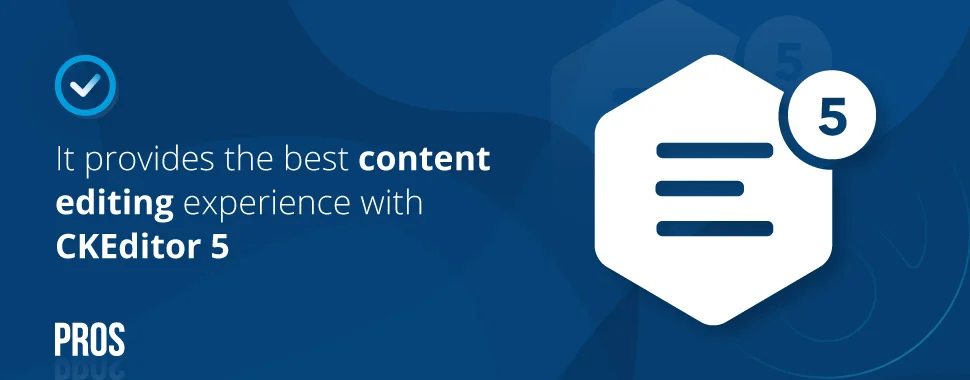
CKEditor is a powerful rich text editor that’s commonly used in content management systems like Drupal.
It gives users an intuitive interface for writing, formatting text, adding multimedia, and working with all sorts of content types.
One of CKEditor 5’s standout new features is drag-and-drop editing. This transforms the whole content editing experience by letting you easily rearrange text, paragraphs, tables, lists, and more just by clicking and dragging.
Editors can move entire blocks or multiple elements around with a simple drag-and-drop. It’s a huge time-saver that streamlines the editing workflow.
CKEditor 5 also lets content editors seamlessly import HTML or plain text content from outside sources and simply drop images right into their work.
Drupal gives you the flexibility to import and move content around and provides much greater control over crafting well-organized, visually appealing content efficiently.
-
It supports Single Directory Components which enhance the theme development experience.
One valuable tool of Drupal is the Single Directory Components (SDC) module.
SDC streamlines how you organize files, templates, and assets – offering a much more intuitive, structured approach to frontend development.
With this module, issues around navigating code, identifying variables, and locating templates become far more manageable. It provides a smoother, more efficient dev experience overall.
The core goal of SDC is to simplify the frontend development workflow and enhance the manageability of custom themes as well as those from Drupal core and contributed modules.
Plain and simple, we want to make life easier for Drupal front-end developers and lower the barrier to entry for those new to Drupal.
Why Drupal might not be the right choice for you
-
Highly complex to use as compared to other CMSs
Drupal isn’t completely beginner-friendly as it’s not a drag-and-drop website. It has a steeper learning curve compared to some other content management systems (CMSs).
Drupal is known for its ability to handle complex projects.
However, if you have a smaller website with straightforward requirements, the extensive features of Drupal might bring about unnecessary complexity. In that case, we recommend you go for simple CMS options like WordPress, which is more suitable for your needs.
-
Requires more time and effort to create a website.

Building a Drupal website – the development timeline hinges on the project’s complexity, the site’s scope, and how much custom work is needed.
For straightforward, basic websites, you’re likely looking at a 3-4 months runway to get it launched. Design mocks, coding core pages/features, integrating third-party modules, etc.
But large-scale, heavily customized sites with advanced functionality? Those can easily take 5 months, 6 months, up to 8 months, or longer. Deep coding expertise is required, along with extensive testing and refinement to nail that tailored experience.
At the end of the day, streamlined Drupal sites move quicker, but the more sophistication needed, the longer that dev cycle stretches.
It’s the nature of elite web development.
-
There are challenges regarding updates and migration
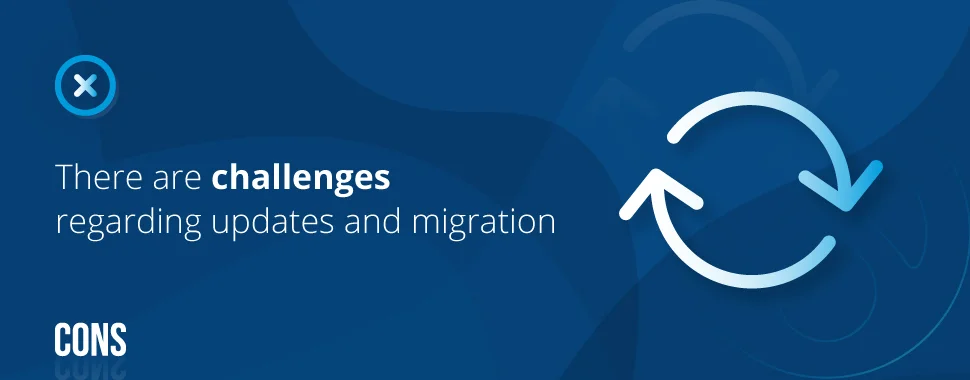
When it comes to migration, Drupal has a module available. However, this module is not too strong or flexible. It can be used to migrate certain content types, but not all of them.For instance, it does not support file and image uploads, which are commonly used in many Drupal-based websites.
The Drupal Migration Module doesn’t make it easy to map data fields between different systems.
So if you need to take a “first name” field from your old system and pipe that data into a “given name” field in Drupal, you’ll have to write out all those field mappings manually yourself.
And let me tell you, that mapping process is no walk in the park. Having to manually spell out how every field relates across systems is just flat out time-consuming and unnecessarily complex.
-
Due to more time spent in development it’s not budget-friendly
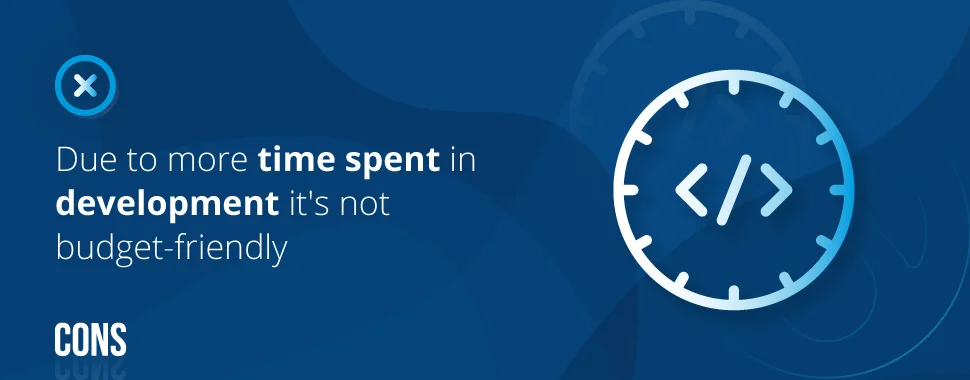
Building a Drupal website isn’t a race against the clock. The development timeline depends on how complex the project is, the site’s scope, and the level of customization required.
For straightforward, basic websites, you’re likely looking at 3 to 4 months to have it ready. That covers design mockups, coding core pages and integrations, plugging in needed modules – the fundamentals.
But large-scale, heavily customized build packing advanced functionality? Those can easily demand 5, 6, or even 8 months or more before launching. These are the intricate, tailored projects requiring deep coding work, rigorous testing, and relentless refinement to nail every last detail seamlessly.
At the end of the day, simpler Drupal sites move quicker. But the more sophistication and uniqueness needed, the longer that development cycle inevitably stretches. It’s the nature of elite web software engineering.
-
Missing modern user interface (UI), making the interface boring
Drupal’s user interface (UI) has faced criticism for not being as intuitive or user-friendly as other leading content management systems (CMS), like WordPress.
The complexity stems from its myriad of options, configurations, and technical jargon, which can be daunting for newcomers.
Here’s an interesting fact.
Nearly 50% of Drupal sites continue to operate on older versions such as Drupal 7, with many unlikely to upgrade. Only a small fraction, around 2%, have moved to the latest version, Drupal 10.

Its administration interface, in particular, may seem intimidating, making seemingly straightforward tasks like creating or editing content feel unnecessarily complicated.
Drupal has traditionally prioritized flexibility, scalability, and enterprise-level features, which has led to a more complex UI.
Each new version aims to improve the UI, making it more user-friendly, yet there is considerable room for improvement.
It’s crucial to highlight that the challenges with Drupal’s UI predominantly affect non-technical users.
In contrast, experienced Drupal developers tend to find the UI sufficiently functional after acclimating to its learning curve.
This complexity is often considered a minor compromise for a CMS that offers considerable flexibility and power, catering well to the demands of complex, feature-rich enterprise websites
-
Complex HTML structure, which makes it hard to implement the desired design

Drupal is known for producing a more complex HTML structure than many other CMS platforms.
This intricacy, characterized by nested, multi-layered markup, offers flexibility but also poses challenges for designers and front-end developers aiming to apply custom styles and layouts diverging from Drupal’s standard rendering.
This situation can make customization significantly demanding for those adept at crafting custom CSS and templates.
Skilled Drupal teams can streamline the HTML output through methods like template overrides, preprocess functions, and utilizing contributed themes.
These adjustments, while effective, are often unnecessary with lighter-weight CMSs, which naturally produce cleaner markup straightaway.
Ultimately, Drupal’s elaborate and potent HTML structure underpins the platform’s capacity for broad customization and sophisticated functionality, establishing it as a top choice for enterprise-grade publishing platforms.
For simpler websites that prioritize ease over detailed customization, alternative CMS platforms might offer a more direct approach to achieving the desired designs, thanks to their cleaner default HTML output, facilitating a quicker and simpler development process.
-
-
Less availability of modules than other CMS
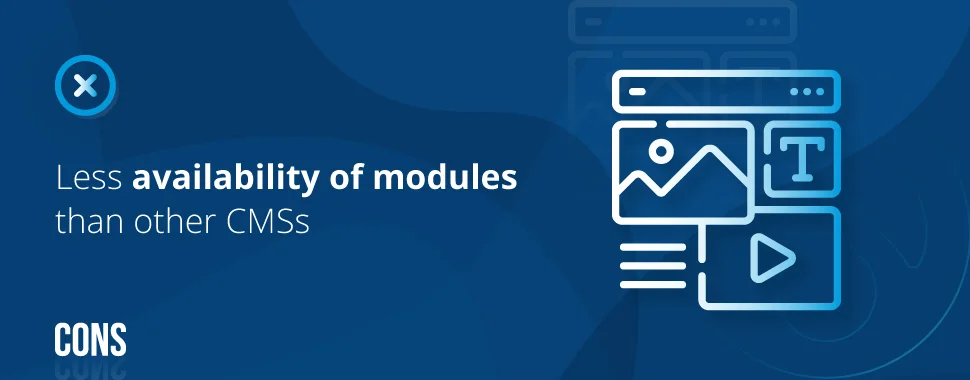
One of the biggest letdowns of using Drupal is its relatively small selection of modules and themes out there compared to some of the other big CMS players like WordPress.Drupal has over 40,000 modules and around 2,500 themes available.
Having a limited module and theme supply can cramp your style as a developer or site builder.
Drupal’s more confined cache of modules and themes means you’ve got fewer ready-made solutions at your fingertips.
However, it’s important to note that Drupal add-ons were purpose-built for robust, enterprise-grade websites that need to scale heavily.
So If you’re working on a relatively straightforward website or blog, WordPress’s wealth of plugins will work wonders. But for complex, mission-critical builds, Drupal’s focused, high-powered tools are where it’s at.
Should you use Drupal?
After learning about the benefits and drawbacks of Drupal, you may wonder whether Drupal is the right choice for your website.
As a Drupal development agency that builds websites on various platforms, we recommend you use Drupal if you:
- Are an enterprise, nonprofit, university, or government organization
- Have a large website with more than 25 main pages
- Need an extremely secure, scalable, highly robust content management system
Check out our Drupal development services to see how we can help you with the next step, or contact our team to get some recommendations on which plans are right for you.
Want to consider other CMS options?
Not quite sure if Drupal is what you’re looking for? Here are some other CMS options depending on the type of client you are:
- WordPress: Typically good for small to medium websites, that favor SEO and easy content management.
- Webflow: Great for startups or designers with a need to express creativity and emphasis on easy edits with a drag-and-drop builder.
- Shopify: Ideal for e-commerce websites that want to scale and sell products with built-in features and tools.
Consider these alternatives if they best fit your specific needs.

